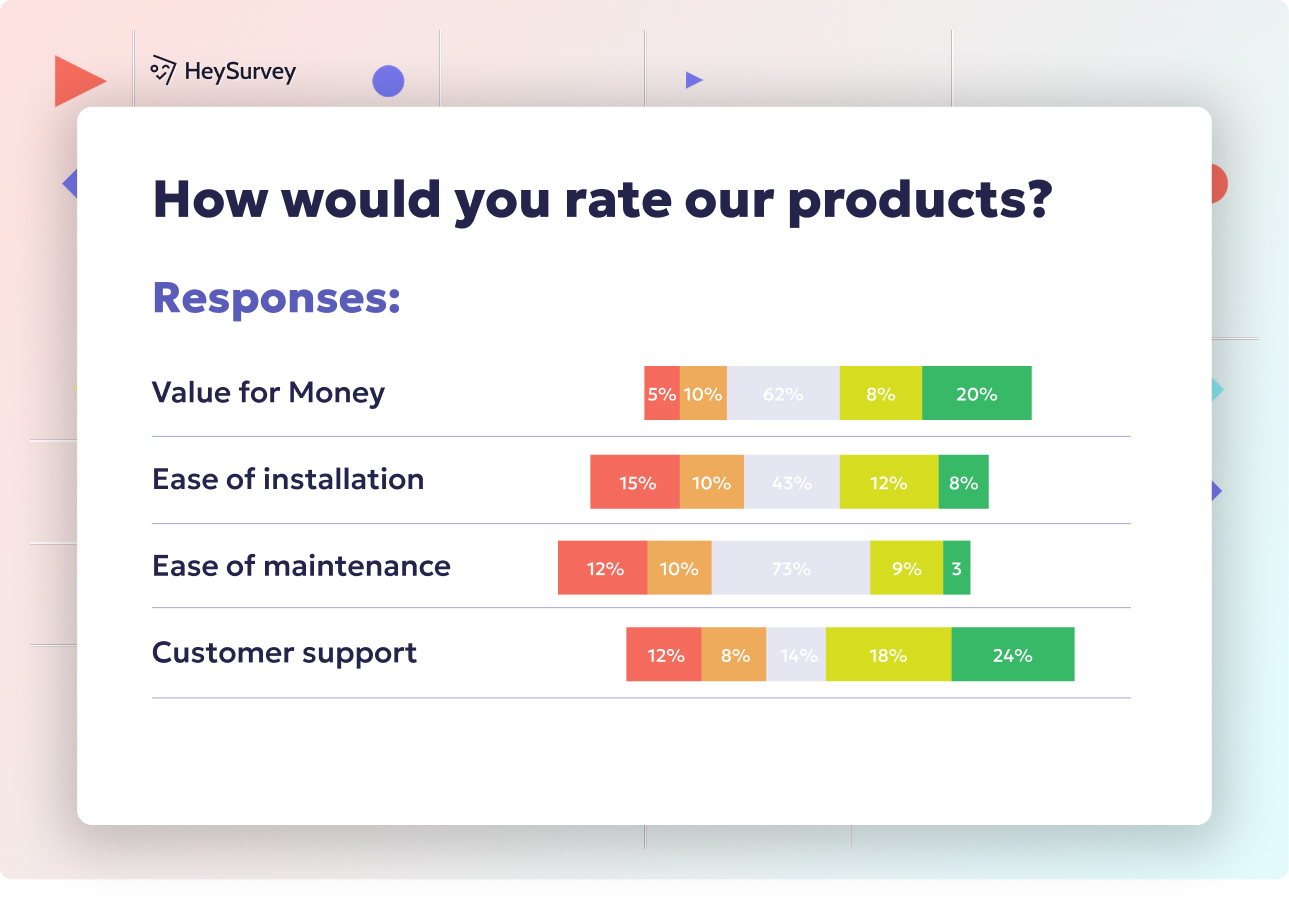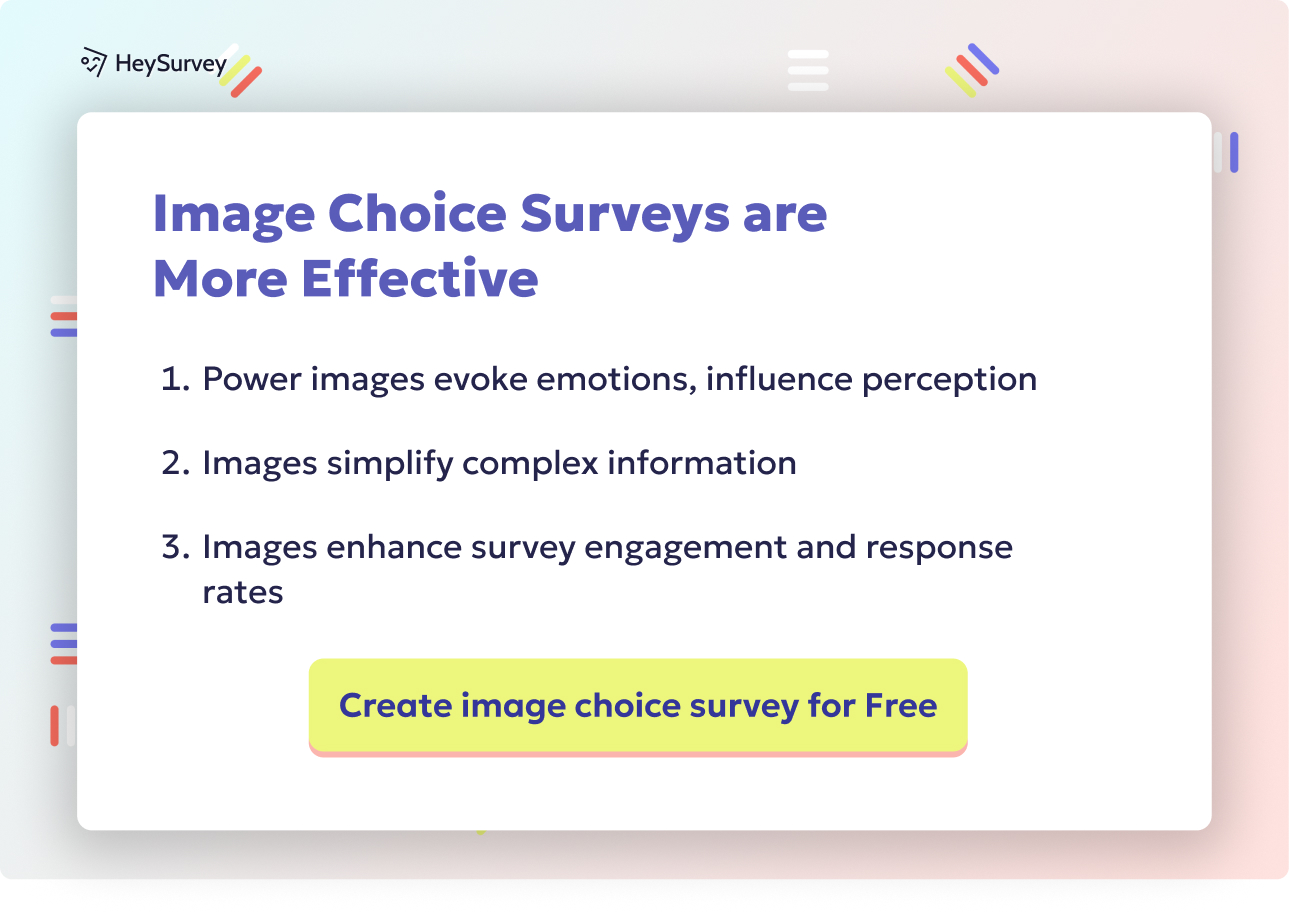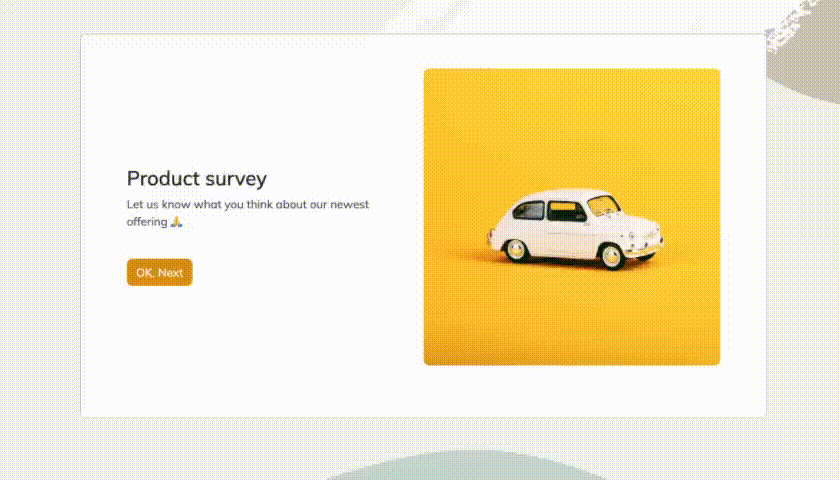27 Dress Code Survey Questions for Effective Policies
Explore 25 helpful dress code survey questions to shape clear, inclusive corporate attire policies—gain vital feedback fueling comfort and brand alignment.
Sometimes, the best part of an office job is deciding whether to wear sneakers or more formal shoes. Dress codes don’t have to be stuffy, but they do shape how we see each other. Dress code policies ensure a fair standard, while letting personal style shine through in subtle ways.
Dress Code Feedback Survey
When a new attire rule hits, employees may have widely different takes. Gathering responses can open your eyes to what works and what doesn’t. Employee voices matter because policy changes without input often result in hidden grumbles that erode morale.
A recent workplace study found that 65% of employees reported higher collaboration when they participated in dress code decisions. Source
To gauge how staff feel, start these surveys right after launching a new policy or before you plan a revamp. By asking direct questions, you’ll uncover if people truly understand your business’s style goals or if they’re quietly longing for casual Fridays.
Five Sample Questions
- How satisfied are you with our current dress code policy?
- Are there any elements of the dress code you find uncomfortable or restrictive?
- Does the dress code make you feel confident in your role?
- Which aspects of the dress code would you change first, if given the chance?
- How well do you understand the rationale behind our attire guidelines?

Policy Clarity Survey
A great dress code does little good if no one understands it. This survey probes whether people feel your guidelines are straightforward or if they suspect inconsistencies exist. Clear instructions thwart daily frustrations and boost compliance without stern reminders.
Clarity is especially needed if employees come from different cultural backgrounds or professional experiences. If department heads can’t articulate the policy’s core purpose, that’s a big clue more details might be needed. Use digital tools or one-on-one chats to explain your philosophy.
Five Sample Questions
- How would you rate your understanding of the dress code guidelines?
- Do you feel the policy addresses all common work attire scenarios?
- Which specific rules or terms seem unclear or contradictory?
- Does management consistently explain how to follow the policy?
- What improvements can make the policy more transparent?
Create your survey, it's 100% free
Below are the simple steps to create your own “Dress Code” survey with HeySurvey. You can start with a pre-built template by clicking the button below these instructions.
Create a New Survey
• Click “New Survey” or choose a template from the available list.
• Name your survey and open the Survey Editor.
• If you’re not logged in, you’ll be prompted to create an account to later publish and track results.Add Your Questions
• From the Survey Editor, click “Add Question” to insert various question types, such as multiple choice, scale, or text.
• Adjust the wording, enable branching, or mark questions as required.
• Include images or use markdown formatting to make your questions more engaging.Publish Your Survey
• Press “Publish” to finalize your design.
• Copied links allow you to share the survey via email or social media.
• Check that you’re signed in so you can access the results afterward.
Bonus Steps (Optional)
• Apply Branding: Upload a logo or change colors and fonts in the Designer Sidebar to match your organization’s look.
• Define Settings: Set start/end dates, limit responses, or add a redirect page after completion.
• Skip into Branches: Use branching to send respondents to specific follow-up questions or custom endings based on their answers.
Employee Comfort Survey
Comfort is sometimes the biggest driver of productivity. When a dress code feels overly strict, it might harm an otherwise positive environment. Flexible attire policies can reduce distractions and wardrobe-related stress, especially in roles requiring physical movement.
Rolling this out ahead of hot summers or chilly winters ensures you can adapt to the forecast. This level of care shows employees you see them as humans, not mannequins. If your team feels good in their clothes, they might go the extra mile for the company.
In a global engagement survey, 72% of respondents said that improved comfort at work led to higher job satisfaction. Source
Five Sample Questions
- Do you feel physically comfortable wearing the required attire?
- Have you experienced any issues (like overheating) due to our dress code?
- How does your clothing choice impact your day-to-day tasks?
- Which parts of the code do you find least comfortable?
- Is support available for adjusting attire to weather conditions?
Cultural Inclusivity Survey
We live in a colorful world with diverse traditions and personal expressions of faith. A culturally considerate dress code ensures nobody’s style or beliefs are sidelined. You don’t want employees wearing something that feels awkward or violating their religious standards.
This survey is a proactive measure to root out any unconscious bias that may have crept into your attire policy. It’s also valuable if you’re aiming to recruit talent from different places. Make sure your code is open to cultural attire while still reflecting a unified brand identity.
Five Sample Questions
- Does our dress code accommodate religious or cultural attire adequately?
- Do you feel there’s any unintentional bias in the guidelines?
- Are there additional forms of attire we should explicitly allow?
- Does the existing policy encourage respectful diversity in appearance?
- How can we better support cultural expression through clothing?

Dress Code Enforcement Survey
A perfect policy can falter if enforcement is too strict or too loose. Consistent standards help employees feel the rules are fair and not selectively applied. If leadership plays favorites or overlooks certain details, trust can erode.
Check for these issues by distributing a short survey to see if employees perceive uneven policy checks. You can also learn if the consequences for non-compliance are too harsh. Strive for understanding, not punishment, so the code feels like a helpful guideline rather than a corporate muzzle.
Five Sample Questions
- Do you consider the dress code enforcement fair in all departments?
- Have you seen instances of inconsistent policy application?
- How do you feel about the way managers address violations?
- Are penalties for non-compliance explained clearly?
- What steps could improve consistent enforcement?
Uniform Satisfaction Survey
When a company supplies official attire, it’s a chance to unify the brand aesthetic. But a dull uniform can quash individuality if it feels more like a costume. Balanced uniform design respects personal style while emphasizing brand identity.
Another study revealed that 61% of employees wearing comfortable uniforms demonstrated higher loyalty to the brand. Source
Ensure your uniform program isn’t a relic from the 1990s. By asking employees for suggestions, you can resolve issues such as itchy fabrics or unflattering fits. A well-thought-out uniform fosters a sense of unity that’s playful, sleek, and maybe even Instagram-worthy.
Five Sample Questions
- How satisfied are you with the uniform’s overall design?
- Do you consider the fabric comfortable enough for daily wear?
- Does the uniform represent our brand appropriately?
- What improvements would you like to see in the uniform style?
- Do you have any concerns about uniform durability?

Perception of Professionalism Survey
A polished dress code can radiate confidence to clients, partners, and potential hires. When employees believe their attire accurately represents the brand, they’re more likely to bring their best professional-self to customer interactions. But if they feel stuffy or overdressed, they might appear less approachable.
This survey reveals if employees sense the right balance between sophistication and warmth. If clients have commented either positively or negatively, share that data in the questionnaire. Let people explore whether a more relaxed or stricter tone might better capture the essence of your organization.
Five Sample Questions
- Does our dress code project the right level of professionalism?
- Have customers commented on how we dress, either positively or negatively?
- Do you think our current outfits reflect our organizational culture accurately?
- Should we adopt a more relaxed or more formal approach?
- How does our attire compare with industry norms?
Dress Code Revision Suggestions Survey
Fresh trends and evolving workplace norms often demand a flexible approach. When you’re ready to think outside the box, it’s time for a revision-oriented insight survey. People on your team probably have inventive ideas to accommodate comfort, brand image, and inclusivity.
Invite them to share creative solutions or highlight frequent gripes. You might discover employees want extra free-choice days or a shift toward more modern designs. Transparency in this process helps avoid suspicion that dress code changes are arbitrary or budget-driven.
Five Sample Questions
- Which current dress code elements need the most urgent changes?
- What new attire trends or seasonal adjustments would you recommend?
- Where do you see the biggest gaps in inclusivity or clarity?
- Would a partial dress-down day improve employee satisfaction?
- How can we preserve a solid professional image while modernizing rules?
Dos and Don'ts for Conducting Dress Code Surveys
Dos
- Clear communication about survey purpose and importance.
- Respect participant privacy by ensuring feedback is anonymous.
- Include open-ended questions for detailed insights.
- Take action on the feedback to build trust.
- Keep legal and cultural considerations in mind when modifying rules.
Don’ts
- Ignore small-scale feedback that might indicate a larger issue.
- Make all questions mandatory if they don’t apply to everyone.
- Dismiss changes suggested by only a few employees.
- Publicly shame individuals for policy infractions.
- Overlook the importance of continuous policy reviews.
Conclusion
Open-minded surveys create real connections between leadership and staff. Constructive dialogue fosters unity while recognizing unique wardrobe needs. Organizations thrive when people feel valued and comfortable in what they wear. Feedback transforms rigid rules into uplifting codes that reflect corporate identity. An adaptable dress code can be the thread that stitches everyone together in style.